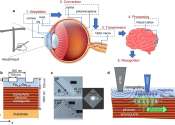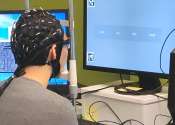In the fields of communications, signal processing, and in electrical engineering more generally, a signal is any time-varying or spatial-varying quantity.
In the physical world, any quantity measurable through time or over space can be taken as a signal. Within a complex society, any set of human information or machine data can also be taken as a signal. Such information or machine data (for example, the dots on a screen, the ink making up text on a paper page, or the words now flowing into the reader's mind) must all be part of systems existing in the physical world – either living or non-living.
Despite the complexity of such systems, their outputs and inputs can often be represented as simple quantities measurable through time or across space. In the latter half of the 20th century, electrical engineering itself separated into several disciplines, specializing in the design and analysis of physical signals and systems, on the one hand, and in the functional behavior and conceptual structure of the complex human and machine systems, on the other. These engineering disciplines have led the way in the design, study, and implementation of systems that take advantage of signals as simple measurable quantities in order to facilitate the transmission, storage, and manipulation of information.









